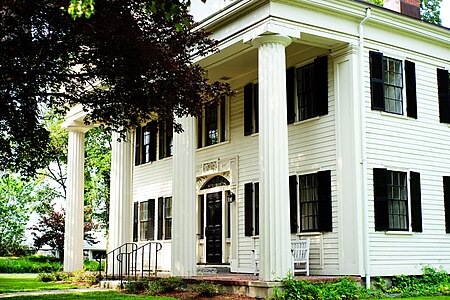Stone Building

The Stone Building, built in 1833, is an historic Greek Revival style building located at 735 Massachusetts Avenue in Lexington, Massachusetts. It was originally a meeting hall and lyceum for East Lexington, which had its own civic identity and, later, its own church, the neighboring Follen Community Church. Notable speakers at the Lyceum included Ralph Waldo Emerson, Charles Sumner, Wendell Phillips, Theodore Parker, Lucy Stone, Josiah Quincy, Jr. and possibly Henry David Thoreau. Emerson notably served as a minister in the building for three years prior to the building of Follen Community Church. The building was deeded to the Trustees of the Cary Memorial Library for $2,000 in 1891, by Ellen Stone, granddaughter of Eli Robbins, who built it, and it was named after her. After her death in 1944, she bequeathed $2,000 to the Town for a fund to aid needy and deserving girls in pursuit of education. The East Lexington branch library which had been established in 1883, occupied it until the building was closed for repairs in 2007.In 1945 a demolition permit was issued for the building followed by several attempts to find a new site on which to locate it. Ultimately it was renovated as the East Branch of Cary Memorial Library in 1947. It was listed on the National Register of Historic Places in 1976.
Excerpt from the Wikipedia article Stone Building (License: CC BY-SA 3.0, Authors, Images).Stone Building
Massachusetts Avenue,
Geographical coordinates (GPS) Address Nearby Places Show on map
Geographical coordinates (GPS)
| Latitude | Longitude |
|---|---|
| N 42.429444444444 ° | E -71.207222222222 ° |
Address
Massachusetts Avenue 736
02421
Massachusetts, United States
Open on Google Maps









